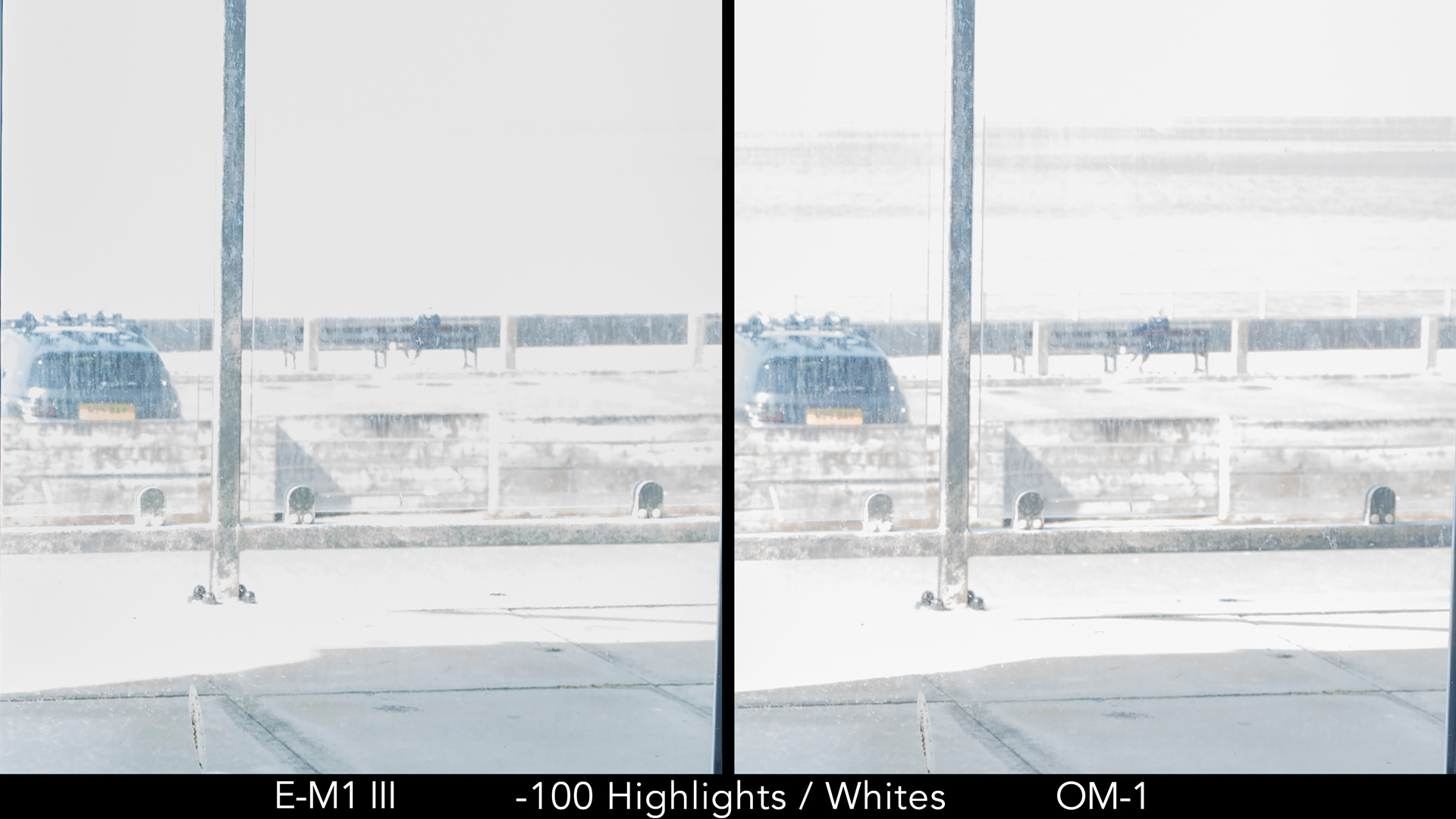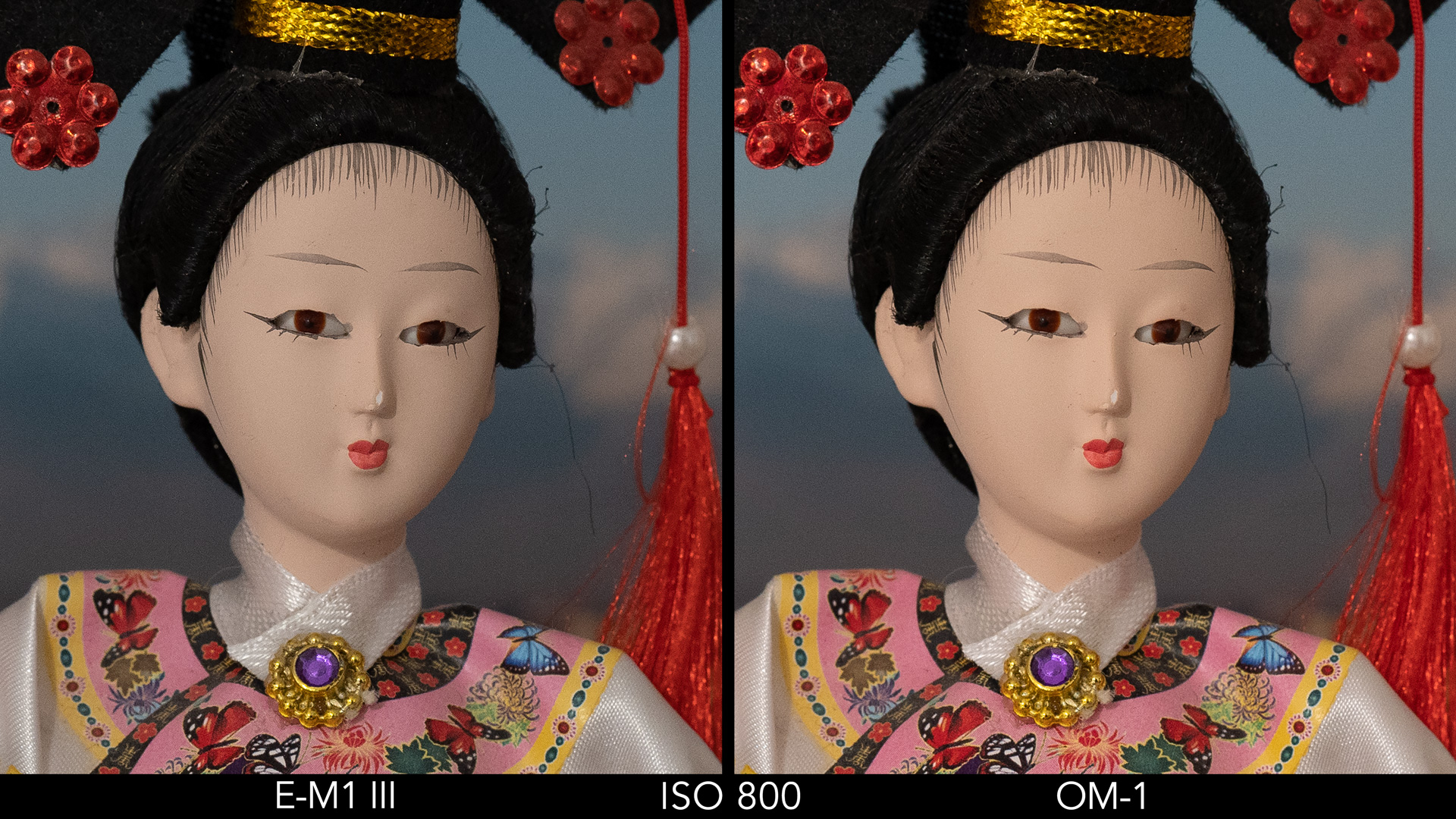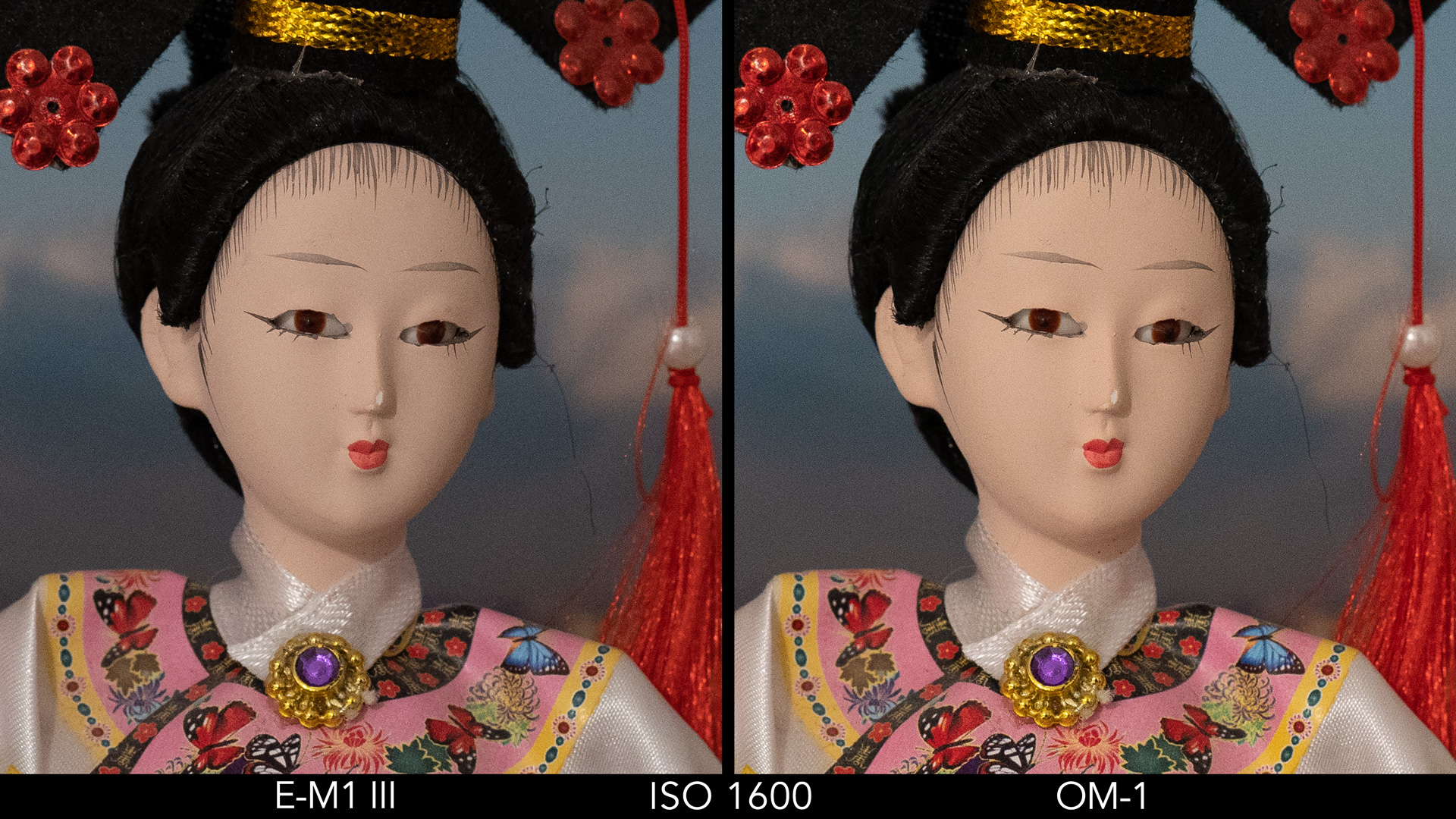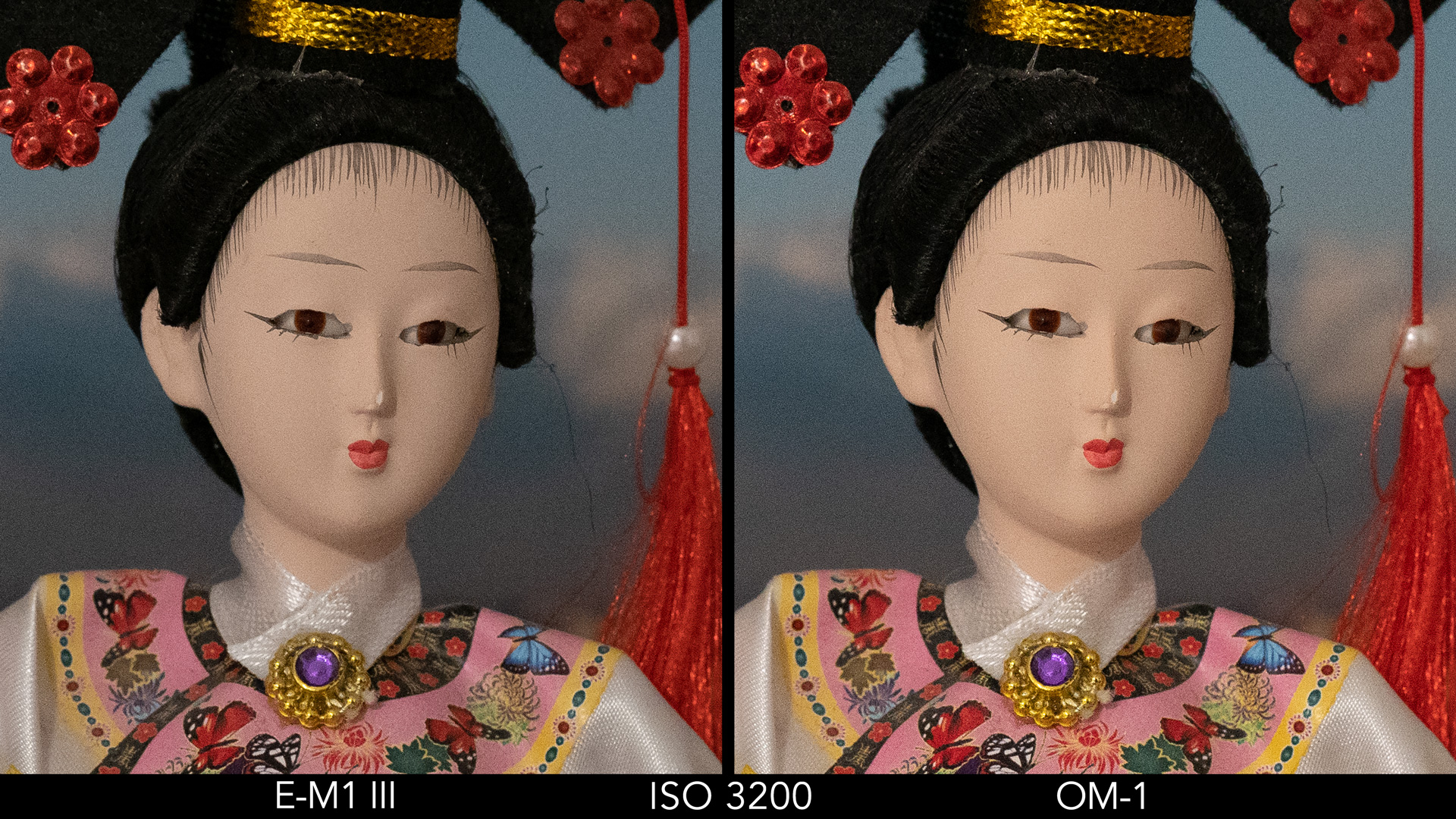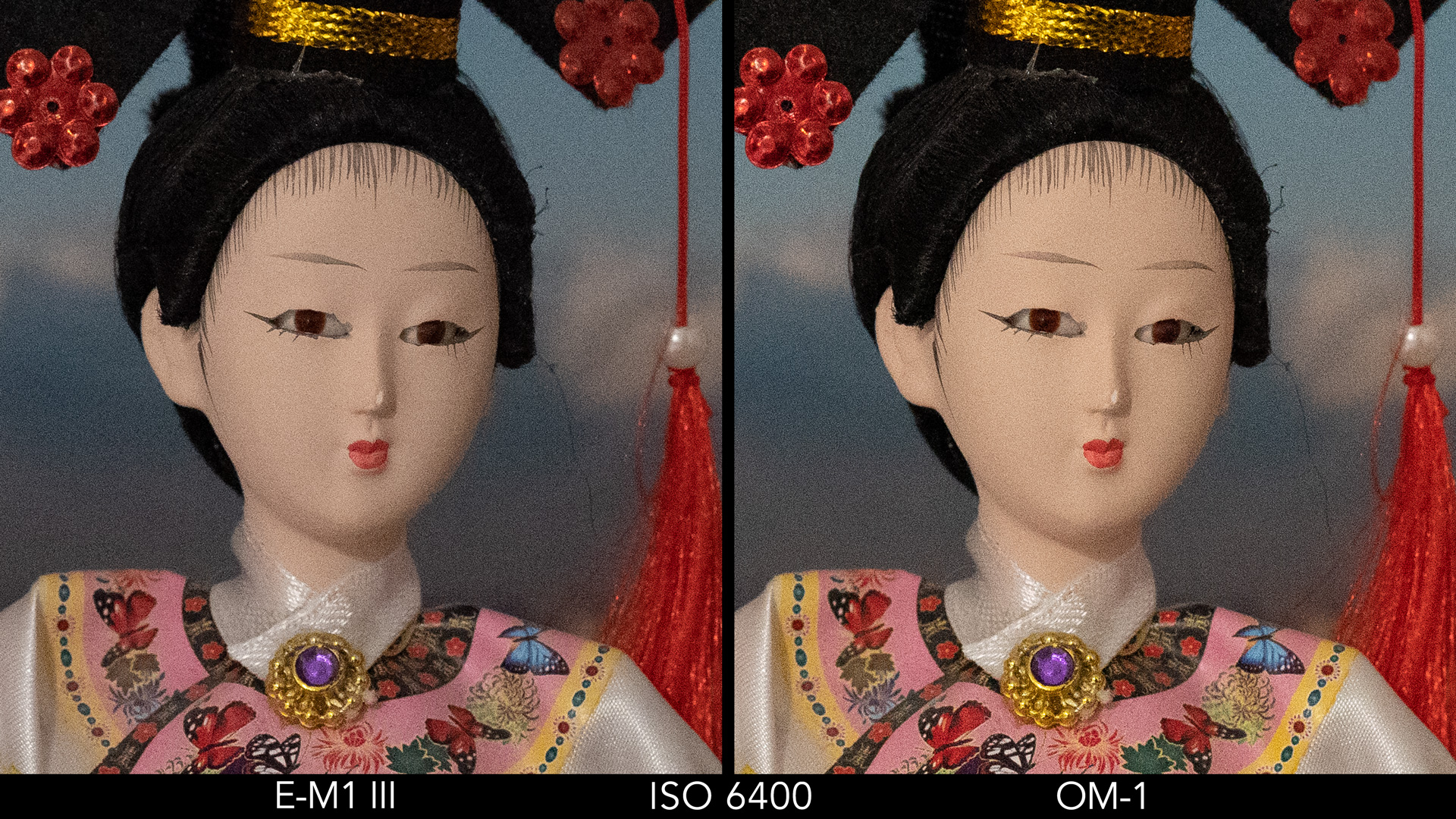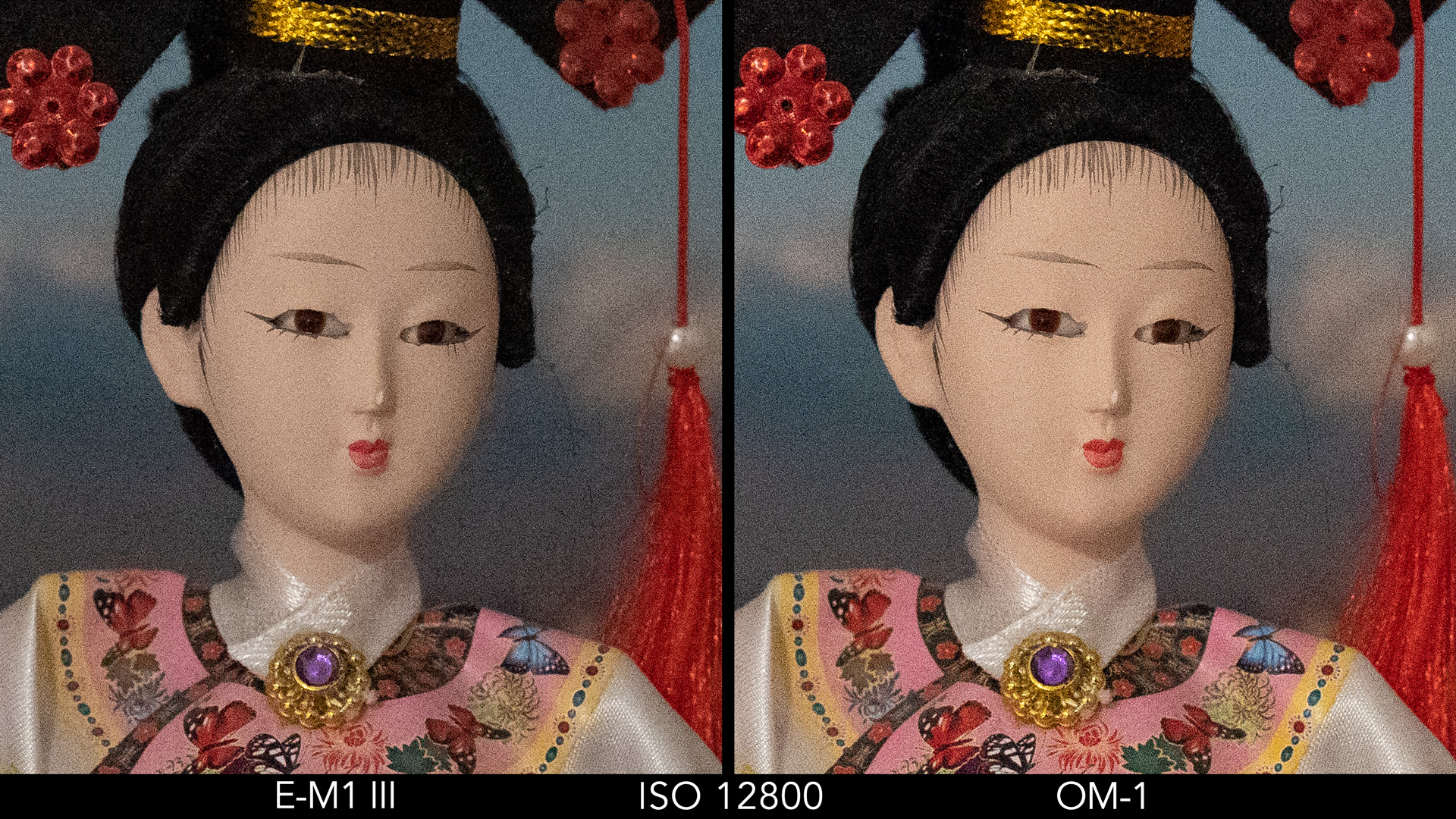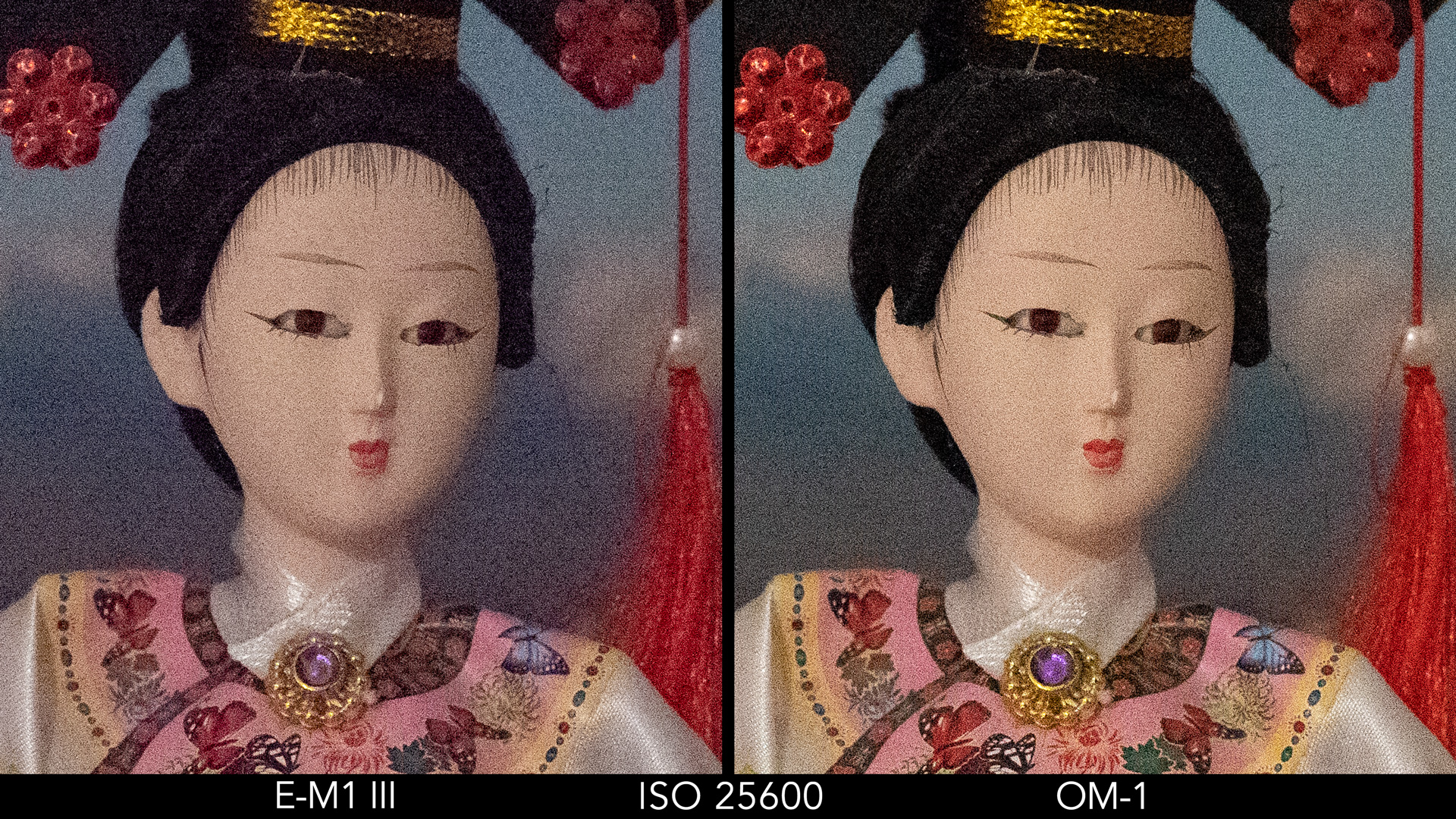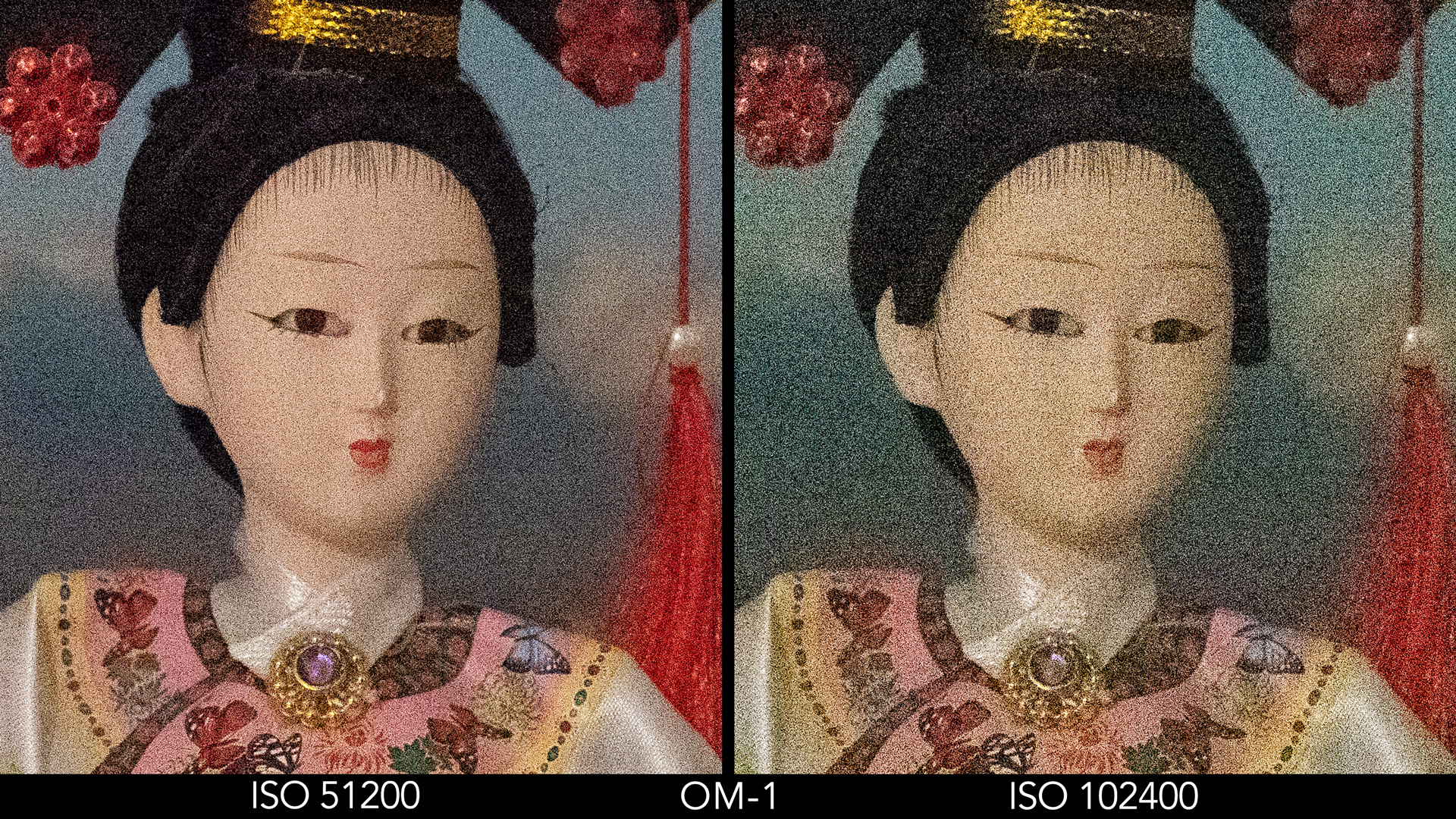The OM-1 is the rightful successor to the E-M1 III but it arrives on the market with a different name, released under the umbrella of the newly formed company that took over Olympus’ Imaging Business between the end of 2020 and the beginning of 2021.
It is safe to say that the OM-1 development started in the old office, and that is perhaps one of the reasons the Olympus name remains printed on the camera body.
But even if the OM-1 is not a 100% original product from OM Digital Solutions, it is the first important camera released under its name, after months of fears and doubts about the future of the system. And, on paper, it looks like a promising start.
Editor’s note: the article has been updated with real world tests. More feedback is on the way.
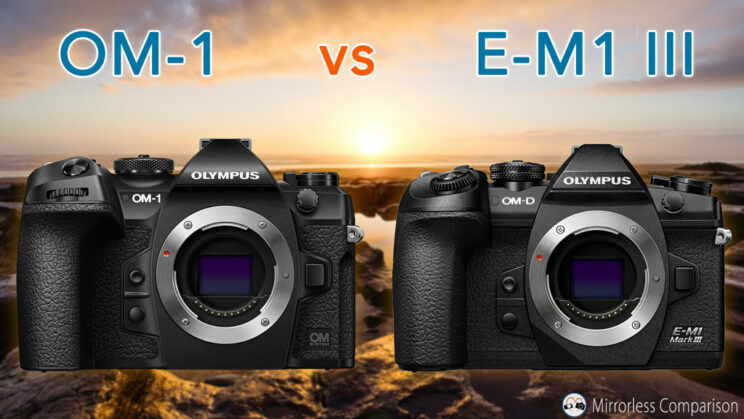
Ethics statement: the following is based on our direct experience with the E-M1 III and the OM-1. We were not asked to write anything about these products, nor were we provided with any sort of compensation. Within the article, there are affiliate links. If you buy something after clicking the link, we will receive a small commission. To know more about our ethics, you can visit our full disclosure page. Thank you!
1. Sensor and Processor
The resolution doesn’t change: both cameras offer 20.4MP but the OM-1 features a brand new sensor with a Stacked Back-Illuminated design, a first for a micro four thirds camera. What’s more, the sensor uses a Quad Pixel Bayer pattern that we’ll explain further in the next chapter (autofocus).

The new sensor brings a few improvement that many have been requesting for some time. In addition to the claimed 1 extra stop of dynamic range (OM’s own words), there is a promising 2-stop vaster ISO range on the new camera. In video mode however, the range is smaller.
| ISO | OM-1 | E-M1 III |
|---|---|---|
| Normal range | 200-25,600 | 200-6,400 |
| Extended range | 80-102,400 | 64-25,600 |
| Movie mode | 200-12800 | 200-6400 |
As you can see from the side by side images below, the improvement in dynamic range is a small one. The amount of noise is very similar when recovering the shadows, whereas the OM-1 does a bit better in the highlights.


As for the high ISO, the level of noise remains very similar. That of the OM-1 is a bit thinner, but not to the point of making the image stand out against that of its predecessor. What is more relevant is the better colour and detail preservation on the new camera, especially from 6,400 ISO.
The OM-1 has a brand new image processor, the TruePic X which is three times faster than the True Pic IX found on the E-M1 III. The sensor readout is 120fps on the new camera which is about two times faster than its predecessor.
Concerning the out-of-camera JPGs, the difference at high ISO is more significant, even with the Noise Filter set to off.
The bit depth of the RAW file remains the same (12-bit lossless compressed).
2. Autofocus
The new sensor of the OM-1 features a quad bayer design. Each pixel is composed of four photodiodes that can be read independently, allowing the camera to use phase detection AF in four directions.
There is a total of 1,053 points: they are all cross-type and cover the entire sensor. This is a significant jump from the E-M1 III, which uses 121 cross-type points across 70% of the sensor surface.
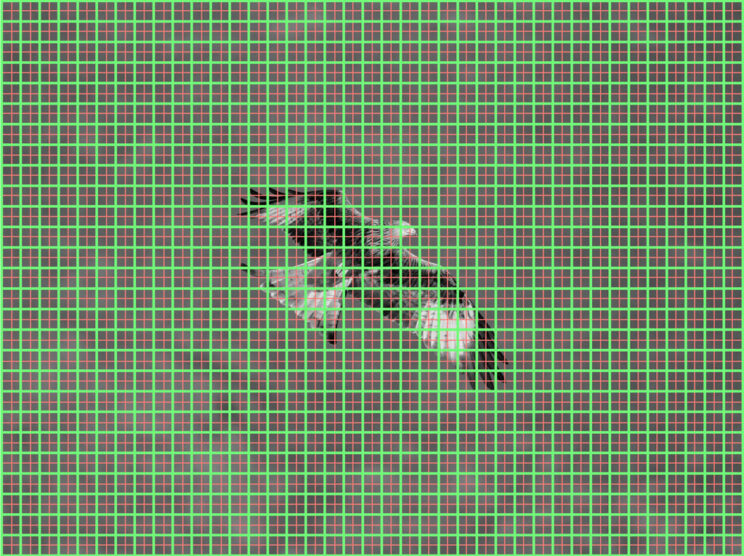
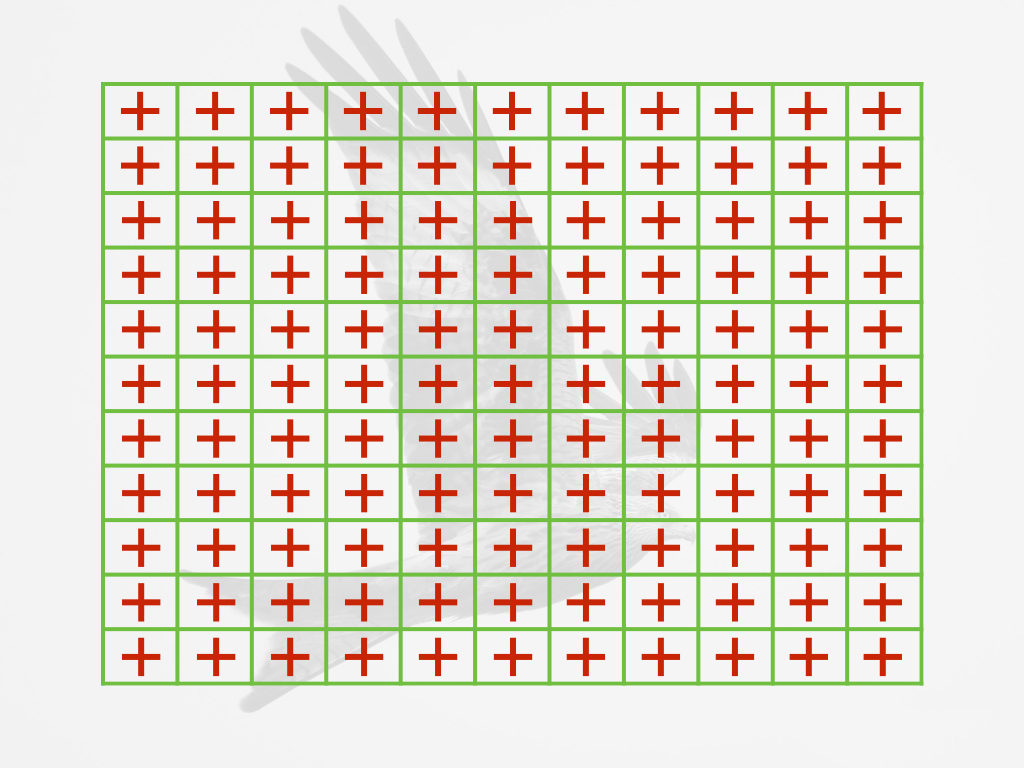
The two cameras can also use contrast detection in addition to phase detection, with the same number of points respectively.
Coupled with the new AF points, the OM-1 also has an updated list of Target settings (AF Area mode).
| AF Target | OM-1 | E-M1 III |
|---|---|---|
| Single Target (1-point) | Yes | Yes |
| Single Target (1-point, small) | Yes | Yes |
| Cross 5-Target (5-points) | – | Yes |
| 9-Target (9 points) | – | Yes |
| 25-Target (25-points) | – | Yes |
| Cross Target (39-points) | Yes | – |
| Middle target (63 points) | Yes | – |
| Large target (165 points) | Yes | – |
| All-Target | Yes | – |
| Custom Target | Yes | – |
The new camera features an updated AF algorithm and the software also analyses colour and contrast in the scene. Coupled with the phase detection data, the OM-1 can create a detailed ‘depth map’ of the scene to improve tracking.
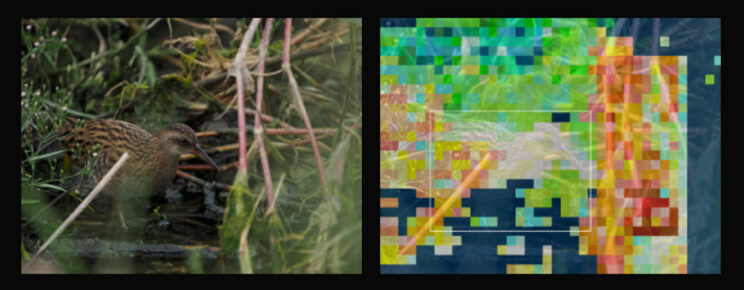
Then we have deep learning technology, or more specifically, the capability of recognising and tracking various type of subjects. This feature is missing from the E-M1 III and was exclusive to the E-M1X, until now.
The OM-1 can track formula cars, motorcycles, airplanes, helicopters, trains, birds, dogs and cats. For the first time, this feature works in S-AF too and is 2x more accurate and 3x faster compared to the E-M1X.
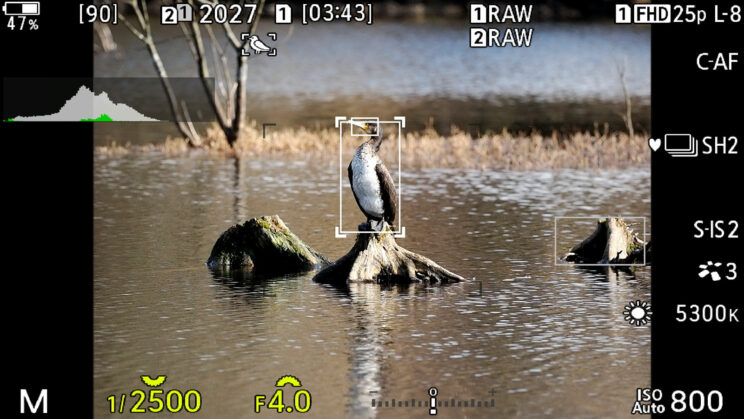
In my birds in flight test, I found a significant improvement with a higher keeper rate than previous OM-D cameras, and the Bird Subject Detection setting plays a big role. You can read more about this in my OM-1 Review for Bird Photography.
Face and Eye Priority AF has been improved as well: it is more precise, more responsive, and with better tracking performance according to OM.
Then we have the minimum sensitivity in low light, which is -8Ev on the OM-1 and -6Ev on the E-M1 III (measured with an F1.2 lens).
Finally, both cameras feature a variety of extra features and settings related to the autofocus, like AF Limiter and Starry Sky AF.
3. Shutter and Continuous Shooting
The E-M1 III has impressive continuous shooting capabilities with a maximum of 60fps (AF locked) or 18fps (with C-AF), but those numbers suddenly look modest when compared to the new micro four thirds camera.
The OM-1 pushes the boundaries with a maximum of 50fps (with C-AF) and 120fps (AF locked).

These fast drive speeds work with RAW and are available with the electronic shutter (this is valid for both cameras).
Here is a recap of all the bursts available.
| Shutter | OM-1 | E-M1 III |
|---|---|---|
| Mechanical | 10fps | 15fps (H)* 10fps (L) |
| Electronic | 20fps 50fps (SH2) 120fps (SH1)* | 60fps (H)* 18fps (L) |
The fast speeds available with the electronic shutter also work with the Pro Capture mode, which allows you to save images before pressing the shutter button all the way down.
Although all this sounds really good, there are some limitations related to the lenses that you need to be aware of. For example, if you want Pro Capture with continuous AF (L mode, SH2 mode), only Olympus micro four thirds lenses are compatible.
Furthermore, the speed of 50fps (with C-AF) on the OM-1 works with a restricted selection of Olympus lenses. With the others, the maximum speed available is 25fps. These lenses are:
- 12-40mm F2.8 PRO
- 12-40mm F2.8 PRO Ⅱ
- 12-100mm F4.0 IS PRO
- 40-150mm F2.8 PRO
- 150-400mm F4.5 TC 1.25x IS PRO
- 300mm F4.0 IS PRO
OM has mentioned a blackout-free experience when working at 50fps and 120fps on the new camera, and I can confirm now that this happens in live view mode (like the Sony A9 and A1 series).
The faster sensor readout allows the OM-1 to sync flash up to 1/100s and ISO 12,800, or 1/50s and ISO 16,000 when using the electronic shutter. By comparison, the E-M1 III can do 1/50s up to ISO 8,000, or 1/20s with higher sensitivities.
The fastest shutter speed is the same for both cameras: 1/8000s with the mechanical curtains, or 1/32,000 with the electronic shutter. The mechanical shutter has a rating of 400,000 actuations.
Finally, we have the buffer capabilities. Strangely, the E-M1 III does better at 10fps with the mechanical shutter, but otherwise the OM-1 is superior. Additionally, on the new camera, a buffer indicator appears on the LCD or EVF to show you how much memory is left.
| Burst | OM-1 | E-M1 III |
|---|---|---|
| 10fps | 139 RAW 169 JPG LF | 286 RAW Unlimited JPG |
| 15fps | – | 101 RAW 134 JPG LF |
| 18fps | – | 76 RAW 90 JPG LF |
| 20fps | 108 RAW 116 JPG LF | – |
| 50fps | 96 RAW 97 JPG LF | – |
| 60fps | – | 50 RAW 50 JPG LF |
| 120fps | 92 RAW 92 JPG LF | – |
4. Image Stabilisation
Here we have a minor difference but since we’re talking about Olympus’ / OM’s most praised feature, I thought it was worth mentioning nonetheless.
Both cameras have in-body image stabilisation that works on 5 axes, and the compensation rating is the same: 7 stops (CIPA).
If you mount an Olympus lens with optical stabilisation (IS), the rating goes up to 7.5Ev on the E-M1 III, and 8Ev on the OM-1.
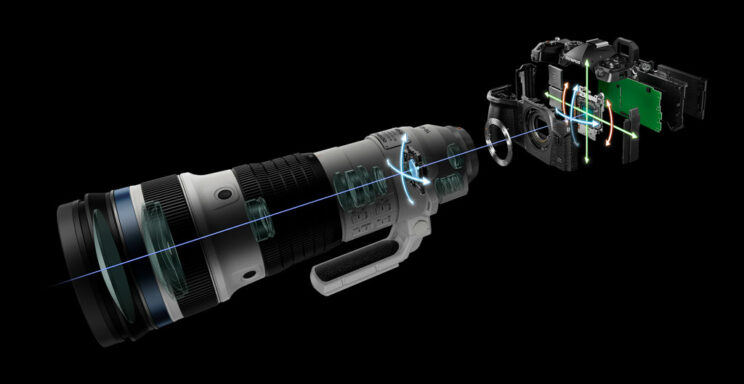
8 stops of compensation is the highest rating ever given to a camera on the market, and a record OM shares with the Canon EOS R3, R5 and R6 (although only with certain RF lenses).
In my experience, these ratings don’t always translate to equal results in the field. For example, I can push the E-M1 III to a higher extreme than the R5 or R6, and I suspect it will be the same with the OM-1.
The new camera also features a 10% lighter sensor shift unit, and has a new Hand-Held Assist option that helps you capture sharp images at slow shutter speeds.
For video, the settings and options remain the same, and include electronic stabilisation (M-IS1), which applies a small crop to the field of view.
5. Movie Quality and Settings
The new OM-1 introduces a number of improvements to be more competitive in the vide-making world. Among these, we have 4K up to 60p and 10-bit internal recording.
Here is a recap of the resolution, frame rates and format available for each camera. Autofocus is available with all resolutions and frame rates.
| OM-1 | E-M1 III | |
|---|---|---|
| 4K / DCI 4K | 24/25/30p 50/60p | 24/25/30p |
| Bit Depth (internal) | 8-bit 4:2:0 10-bit 4:2:2* | 8-bit 4:2:0 |
| High Speed Recording (1080p) | 240p | 120p |
| Rec. limitation | None | 30min / clip |
The 4K and Cinema 4K format use the entire width of the sensor, including 4K60p on the OM-1. If you select Full HD at 240p on the OM-1 however, there is a sensor crop (about 16%).
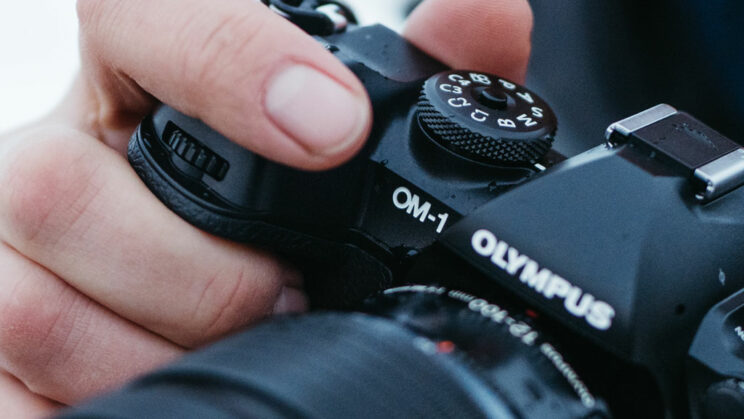
Concerning the bitrate, here is what both cameras can offer.
| OM-1 | E-M1 III | |
|---|---|---|
| 4K 60p | 202Mbps (8-bit) 152Mbps (10-bit) | – |
| 4K 30p | 102Mbps (8-bit) 77Mbps (10-bit) | 102Mbps 237Mbps (var.) |
| Full HD 60p (ALL-I) | 162Mbps (10-bit) | – |
| Full HD 60p (IPB) | 52Mbps (8-bit) 42Mbps (10-bit) | 52Mbps |
| Full HD 30p (ALL-I) | 202Mbps (8-bit) 82Mbps (10-bit) | 202Mbps |
| Full HD 30p (IPB) | 72Mbps (8-bit) 22Mbps (10-bit) | 52Mbps |
Both products can output 12-bit RAW video to the HDMI port and the optional Atomos Ninja V recorder. The OM-Log400 profile is also present, but the OM-1 has the additional HLG (Hybrid Log Gamma) profile.
Both cameras feature a time-lapse movie function to save a video on the memory card, but the resolution in 4K only goes up to 5fps on the E-M1 III. On the OM-1, you can go up to 30fps.
6. Extra Features
Olympus cameras have always been packed with lots of extra features, and some of them such as Live Composite have become quite popular.
OM has refined and improved some of these functionalities thanks to the faster image processor and more advanced algorithm.
One of them is called High Res Shot. The camera takes 8 or 16 images in rapid succession while moving the sensor by half a pixel between each frame (using the IBIS mechanism). The photos are then combined in-camera to create a high resolution image of 50MP (JPG) or 80MP (RAW).
This mode works on a tripod or hand-held for both cameras. The hand-held mode is limited to 50MP for RAW and JPG.

High Res Shot hand-held
What’s new on the OM-1 then? Well, the time needed to capture and compute the images has been significantly reduced: the new camera takes approximately 6 seconds versus 12 seconds on the E-M1 III. Additionally, the OM-1 has a dedicated button to quickly activate the function (I’m assuming it can be customised if you don’t want that).
Then we have Live ND, where the camera captures multiple frames and composites them to create a long exposure effect that you would normally get by using physical filters in front of the lens. In this case, the OM-1 can create the equivalent of a 6 stops effect (ND64) vs 5 stops (ND32) on the E-M1 III.
Live Composite allows you to save only the brightest pixels in the image, which is great for star trails or light painting work. For the first time, this function can work hand-held on the OM-1.
Finally, we have Focus Stacking which works with a total of 15 images, and has a faster processing time on the OM-1 (under five seconds).
Note that Focus Stacking is limited to the use of the following lenses (Focus Bracketing on the other hand can be used with any AF lens, but you’ll need to stack the frames in post yourself):
- 7-14mm F2.8 PRO
- 8-25mm F4.0 PRO
- 12-40mm F2.8 PRO
- 12-40mm F2.8 PRO II
- 12-45mm F4 PRO
- 12-100mm F4.0 IS PRO
- 40-150mm F2.8 PRO
- 40-150mm F4.0 PRO
- 100-400mm F5.0-6.3 IS
- 150-400mm F4.5 TC1.25x IS PRO
- 8mm F1.8 Fisheye PRO
- 30mm F3.5 Macro
- 60mm F2.8 Macro
- 300mm F4.0 IS PRO
Both cameras are equipped with Bluetooth and Wi-Fi capabilities.
7. Design and Ease of Use
The design of the two cameras is very similar overall. OM decided against changing the shape of the body dramatically, which is a good thing in my opinion because the E-M1 III ergonomics are one of my favourite. One difference is the slightly larger grip on the new model.
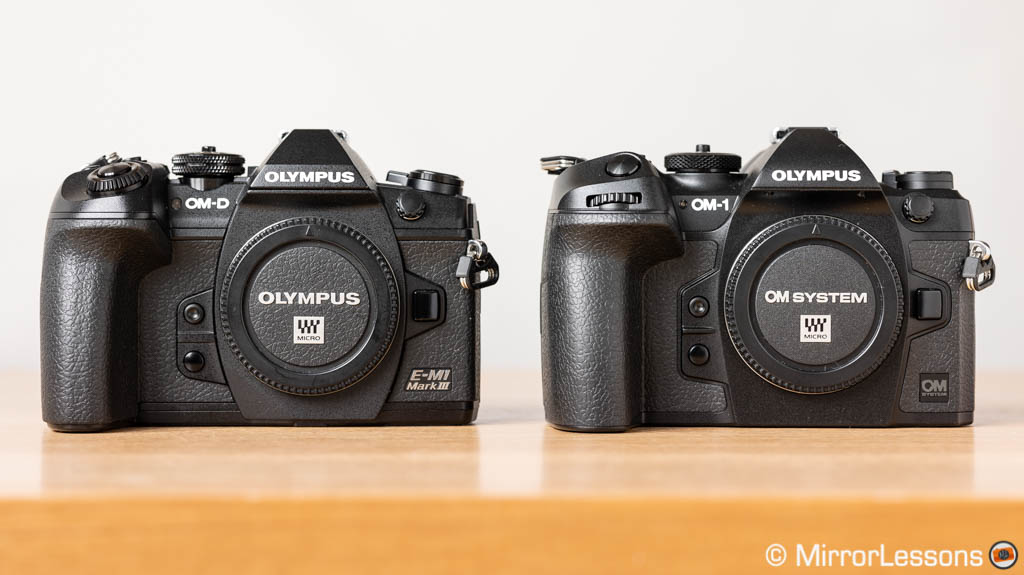
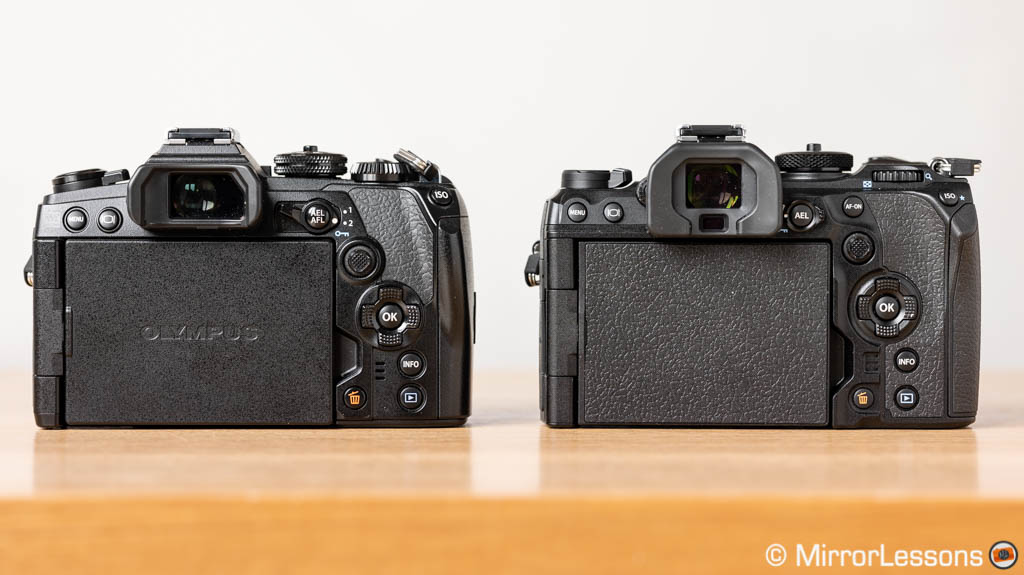
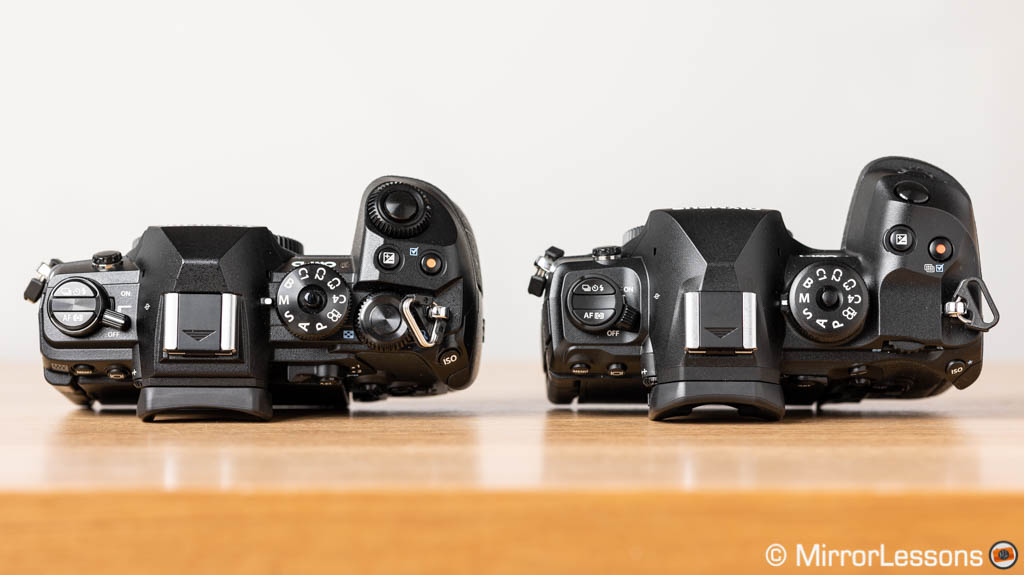
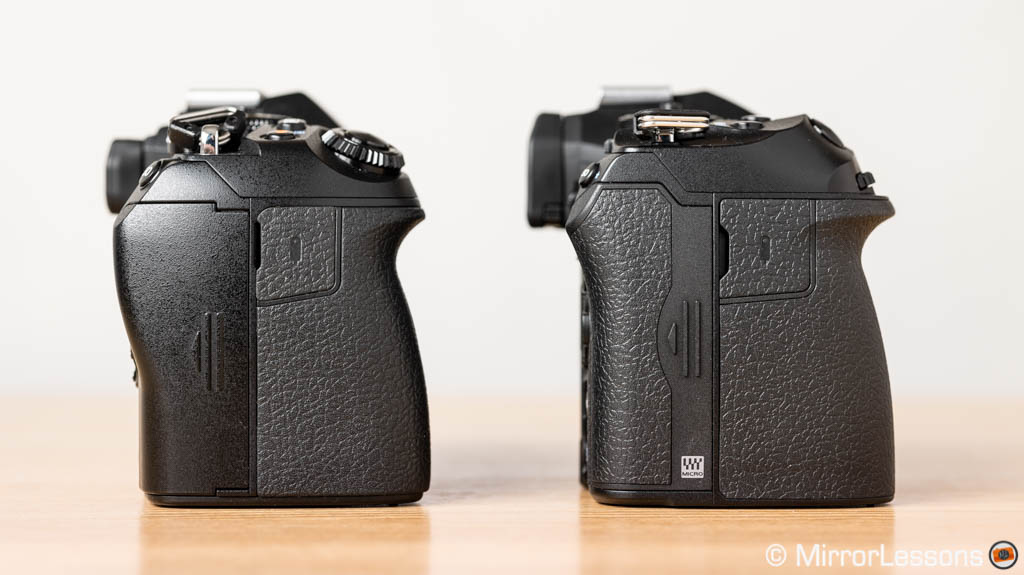
I also appreciate that they left the Olympus name on the front, which gives a sense of continuity. The OM System logo is located on the bottom right on the front of the camera.
The OM-1 is ever so slightly larger and heavier than its predecessor. They both feature a lightweight magnesium alloy frame.
- OM-1: 134.8 x 91.6 x 72.7mm, 599g
- E-M1 III: 134.1 x 90.9 x 68.9mm, 580g
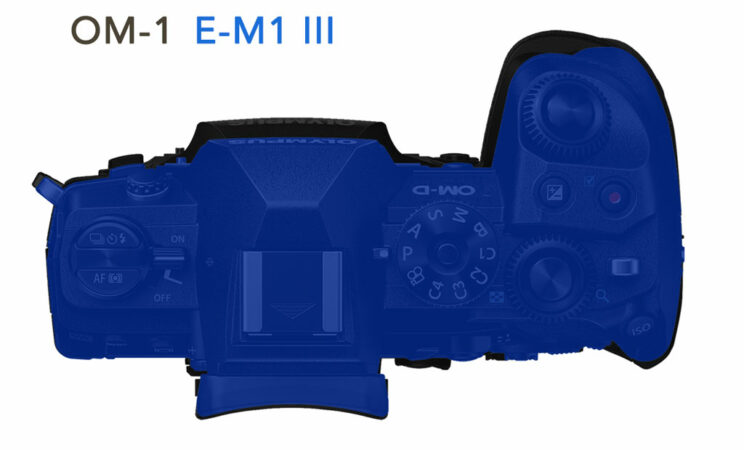
Weather-sealing on the OM-1 includes a IP53 rating, which is higher than the IPX1 rating found on the E-M1 III. They are both freeze-proof down to -10˚C.
Both cameras feature a SSWF (Supersonic Wave Filter) that produces tiny vibrations (G 30,000 times/second) on the sensor to get rid of particles.
Concerning the button layout, very little has changed and the most notable addition is the AF-ON button on the OM-1.

One thing that is completely different is the menu system. Pages and sections have been re-organised and descriptions have been simplified. The new menu is much easier to navigate and familiarise yourself with. Another welcome change is that now, if one setting is greyed out, the camera will tell you what the reason is. There is also a new super control panel (quick menu).
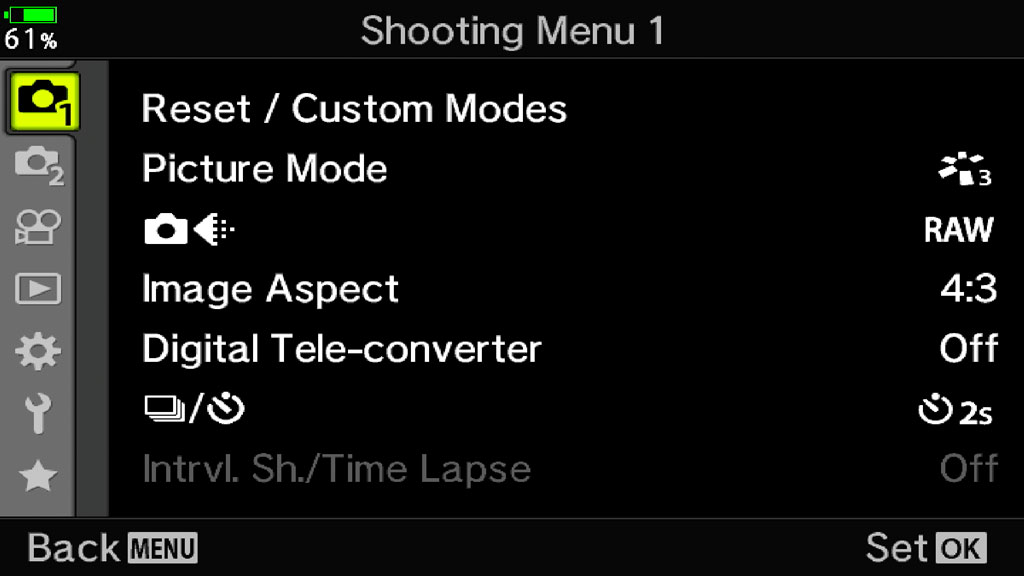

Concerning the physical connectors, they have a:
- microphone input (3.5mm)
- headphone output (3.5mm)
- Micro HDMI (type D)
- USB Type C
- 2.5mm remote control
- sync terminal (flash)
Finally, both cameras have two SD card slots but the OM-1 can use the faster UHS-II card on both slots, whereas only the first one is compatible on the E-M1 model.
8. Viewfinder and LCD Monitor
One thing many users complained about on the latest OM-D products was the lack of a higher resolution for the viewfinder (even the flagship E-M1X has an outdated 2.36M LCD panel).
The OM-1 finally sees a relevant upgrade with an OLED panel and 5.76M dots.
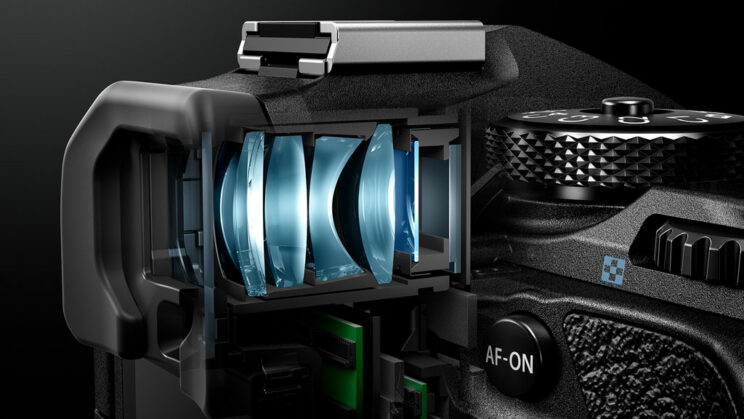
The magnification is a bit higher too (0.83x on the OM-1 versus 0.74x on the E-M1 III) and it also features an anti-fog coating.
The eyepoint (21mm) and refresh rate (120Hz) are the same, whereas the OM-1 EVF has a slightly shorter lag of 5ms, versus 6ms on the E-M1 III.
The touch sensitive monitor on the rear has a multi-angle mechanism on both products. The one on the OM-1 has more resolution: 1.62M vs 1.04M.
9. Battery
The OM-1 comes with a new lithium-ion battery, the BLX-1, which has 2280mAh and should give you 25% more juice according to OM. The CIPA rating is 520 shots per charge.
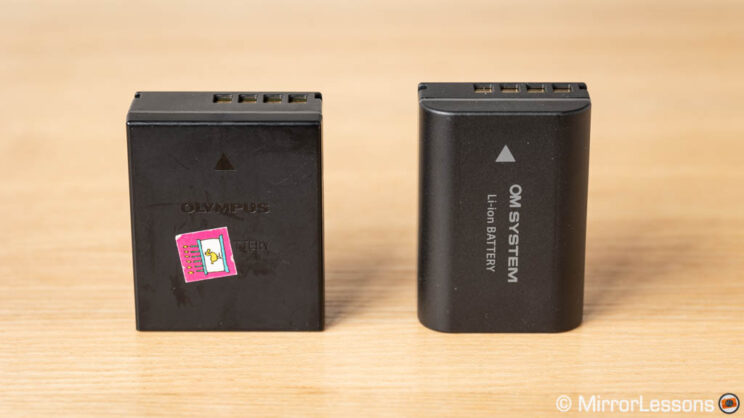
The BHL-1 unit that is shipped alongside the E-M1 III has 1720mAh by comparison and gives the camera a rating of 420 images per charge.
Both products can be charged via the USB C port, and also accept power delivery while in operation. An optional battery grip is available (HLD-9 for the E-M1 III, HLD-10 for the OM-1).
Sadly, the battery charger is not included with the OM-1.
10. Price
The new OM-1 starts at the price of $2200, £2000 or €2200 for the body only.
The E-M1 III is less expensive and can be found for $1600, £1300 or €1600 (body only).
Prices are as of April 2022.
Conclusion
See also:
OM-1 vs E-M1X
OM-1 vs GH6
OM-1 Review for Bird Photography
The last couple of years have been rough for micro four thirds. Olympus struggled to impress with releases such as the E-M5 III and E-M1 III, that were only small upgrades from their predecessors. The sensor and AF tech have been the same since 2016, minus small variations and some good software improvements. Panasonic hasn’t done much better either.
Then came the sale of Olympus’ Imaging Division and the creation of the new OM Digital Solution company, a move that was met with a lot of skepticism and doubt within the community. Many feared this was this end. I tried to remained optimistic, but I too wondered at some point where everything was headed.
Well, I think OM has just proved that everything is still in place. The new OM-1 is the first serious response after many difficult years.
The AF system has improved considerably (at least for wildlife and birds, I have yet to test face/eye detection for humans), the drive speed is impressive and many other features are finally up-to-date with what a photographer would expect from a high-end camera in 2022.
It’s not revolutionary, nor is it the ‘wow’ camera that months of teasers and rumours were ‘promising’. But it is a camera that puts micro four thirds and the Olympus/OM system back on track. Considering how things were just a few years ago, I’d say it’s not a bad effort at all!
Reminder: the links below are affiliate links. If you decided to buy something after clicking the link, we will receive a small commission.
Check price of the OM System OM-1 on
Amazon | B&H Photo
Check the price of the Olympus OM-D E-M1 III on:
Amazon | Amazon UK | B&H Photo | eBay


